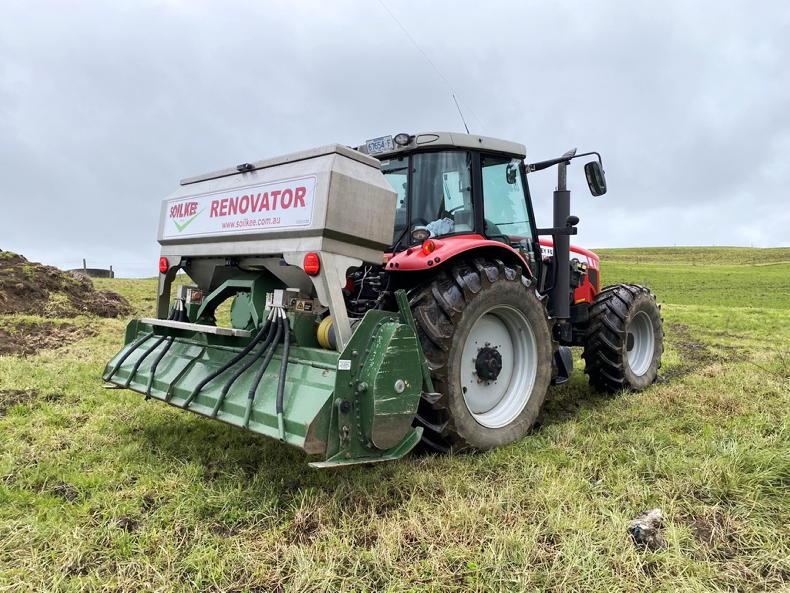Andrew and Linda Whiting went from share-farming to purchasing their own farm in Victoria 20 years ago. Their farm features a 300-acre milking platform, with 300 cows milked all year round. There are also 180 beef and replacement livestock units on a further 440 acres.
Andrew and Linda Whiting went from share-farming to purchasing their own farm in Victoria 20 years ago.
Their farm features a 300-acre milking platform, with 300 cows milked all year round. There are also 180 beef and replacement livestock units on a further 440 acres.
For the fastest return on investment in the early years, expenditure was focused on maximising grass dry matter production through liming, P and K build-up, and spreading 1kg of nitrogen for every day of the year.
Eventually, the farm reached the industry targets as cows were producing 600kgs of milk solids, and growing and conserving a lot of feed, considering the 800mm rainfall in the region. However, they found that there were issues with cow health and fertility.
In the field, sod pull was an issue, the soil would be slick once wet with moderate rain, and quickly drying out once the rain had stopped.
A change of system
In 2009, the Whitings began a move to a different farming system.
Firstly, they began to make better use of dairy washings. They started making some on-farm compost, using bedding from calf-housing, woodchip, and solids from slurry lagoons.
Regular soil-testing and prudent use of their on-farm nutrients became more important.
Andrew also started to use liquid nitrogen buffered with fish emulsion, worm juice, humic and fulvic acids, to enhance the soil biology and use nitrogen more efficiently.
Around the same time, cropping farmers in Victoria had adopted diverse cover cropping, and the Whitings felt that they needed to introduce more diversity into their pastures.
Having used numerous direct-drill and minimum till methods to establish peas, clovers, and cereals, they found success was hit and miss.
Soilkee machine
Andrew discovered the Soilkee machine a few years ago and has adopted the practice across the farm. This is a strip tillage system, which allows new seed to establish within a growing grass sward.

The Soilkee machine on the farm.
The machine works to a depth of three to four inches and leaves 70% of the soil undisturbed. If operated in good conditions, a light dust of soil will spread across 80% to 100% of the field surface.
This acts as a barrier to slow the growth of the existing grass, and speed up the composting of dead material on the soil surface. There is also an aeration effect to the action of the machine lifting soil around the blade.
Andrew now aims to establish both a summer mix and a winter mix in each paddock. The seed is sourced from a local merchant, it is sown at 46kg/ha and comprises 19 different species – including cereals, grasses, herbs, brassicas and legumes. Andrew keeps the cows on a rotation of at least six weeks in length.
While many grazing gurus may shudder at the thought, the variety of plants in the sward means there is a lot of highly digestible material to be grazed.
The farm is outperforming the conventional target in the area of “one tonne of dry matter for every 100mm of rainfall”.
Rather than eight tonnes of dry matter per hectare each year, the farm now grows 10 to 15 tonnes of dry matter per hectare each year, depending on the weather.
Being paid for carbon
I walked the farm with Harry, Andrew and Linda’s son. The spade is always kept in the Ute. Turning the sod reveals a really nice soil structure. The Whiting family recently invested in comprehensive soil samples to one metre in depth.
Interestingly, their neighbour allowed them to take a sample to represent a baseline. The total difference was a 1.5% rise in organic carbon and 5% increase in moisture retention.
In the context of the Australian Soil Carbon Accreditation Scheme, this rise in organic carbon represents 10 carbon credits generated per hectare, or at current prices, $380 per hectare.

A spade is always in the Ute to check on soil quality.
The farm of Niels Olsen was the first Australian farm to be accredited with soil carbon credits. Niels also happens to be the inventor of the Soilkee machine. The machine has had an impressive impact on the two farms I visited.
While soil carbon trading is very much in its infancy, scale is important to justify the expense of soil analysis and accreditation.
The most impressive impact of the strip tillage mechanism on these farms has been the ability to establish diverse pastures and improve their agronomic capability and resilience. It has maximised quality feed supply to these farming operations, above and beyond others in their region.
David Fennelly is a 2023 Nuffield Ireland Scholar and a dairy farmer in Co Laois. His study topic is “Diversity in Irish grazing swards and systems: how can alternative pastures, inputs, and grazing strategies address challenges facing dairy farms?” This year is his first in the two-year Nuffield programme, and so far he has participated in the Contemporary Scholars Conference (CSC) in Vancouver, Canada, and his Global Focus Program (GFP) travels have taken him to Singapore, Borneo, Denmark, Brazil and Australia. He will travel further to France, the UK and New Zealand to research his own study topic.





SHARING OPTIONS: